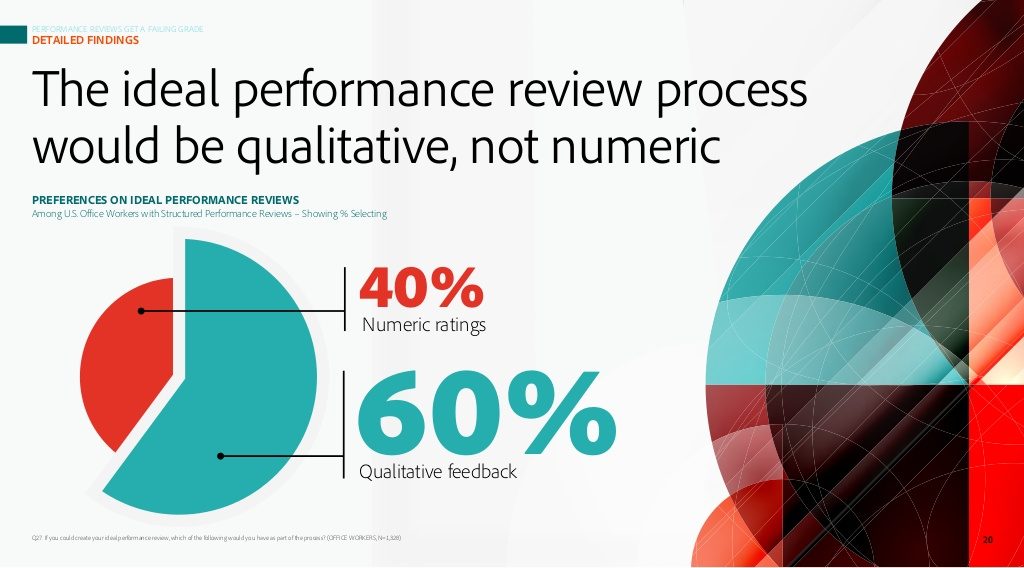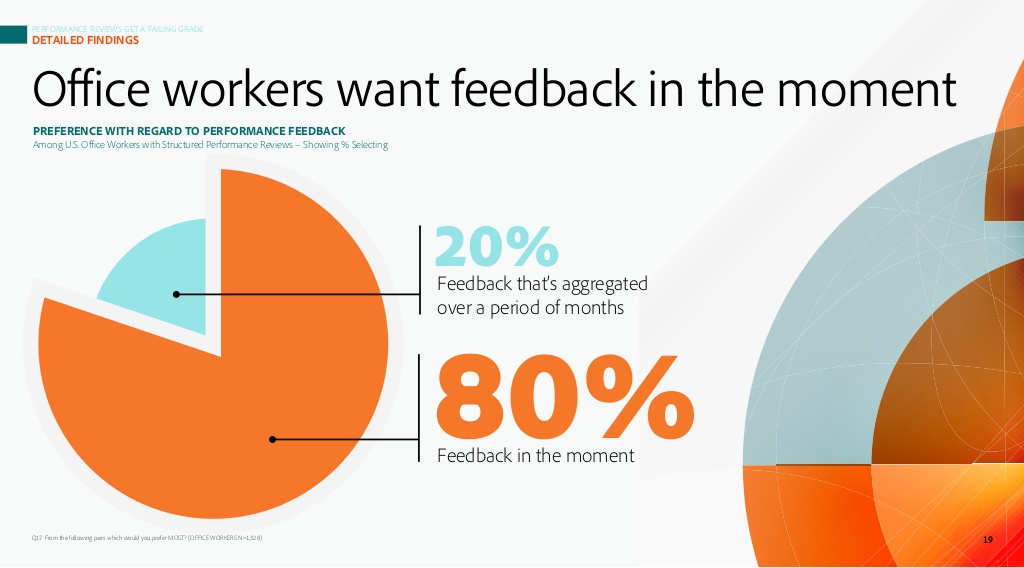Follow these tips for pain-free and inspirational appraisals.
There is a culture of fear around appraisals: staff look forward to the annual appraisals with about as much enthusiasm as they do to a visit to the dentist.
So, what are the employees’ main grievances about appraisals? A research paper from Regent University shows that appraisees have the following complaints about appraisals:
- Lack of objectivity, rater bias, and favoritism
- Hypocrisy of the manager
- Poor informal feedback, e.g., vague, unspecific, and unsubstantiated
- Report card syndrome, where appraisees are surprised by a list of poor performance examples
With traditional appraisal systems no longer being fit-for-purpose, it’s time for a change. The good news is that by adopting some of the following tactics, organizations can quickly revitalize a wearying appraisal process.
Continuous Feedback
If you haven’t implemented this already, the first step is to abandon annual appraisals in favor of more regular feedback.
This continuous review culture provides employees with a welcome immediacy to their performance feedback.
Frequent feedback gives employees the golden opportunity to correct issues while they are still small and manageable.
This is in contrast to the 12-month review scenario where issues are left unchecked, fester, and balloon into performance crises.
Given these dynamics, it’s no surprise that research shows that firms who move to continuous appraisals see a 73% increase in employee engagement.
There’s an app for this
Using a supportive app can ease your move to a continuous feedback culture by effortlessly automating any associated, additional labour overhead. For this reason, continuous feedback programs require supportive apps that streamline the underlying admin processes. Start with an off-the-shelf customizable 360 degree feedback app. If this strategy proves unsuitable you could design your own in-house app.
Reduce the emphasis on ratings or eliminate scores altogether
Traditional appraisal systems rely on giving employees a numerical performance rating, which may be doing more harm than good.
Stanford University Professor Bob Sutton argues in his book Hard Facts, Dangerous Half-Truths and Total Nonsense that “performance rankings can lead to destructive internal competition, which can make it tough to build a culture of knowledge sharing. In addition, there seems to be a self-fulfilling prophecy at work, in which a person who receives a poor evaluation does even worse in the subsequent rating period.”
It’s no wonder that performance ratings evoke so much fear.
Passing such a final judgment on appraisee performance in this way, particularly in the case of negative feedback, can be very damaging. As a result, firms such as Adobe have taken the radical but successful step of removing scores altogether in favor of a more qualitative approach.

If you can’t prize yourself away from performance scores, do what Google has done.
At Google, appraisals and pay reviews occur at different times, which is liberating and enables the appraisal process to feel more developmental and less threatening.
By adopting some of these tactics, you can reduce the fear around performance ratings and see a marked improvement in discussion quality and the general ambiance of the meeting.
Put negative feedback into perspective
Research shows that negative feedback has a disproportionately large effect on our mood compared to positive feedback.
This study from the Occupational and Organizational Psychology Journal found that the “relationship between negative events and mood was approximately five times stronger than that between positive events and mood.”
In addition to this, research reported in the Harvard Business Review showed that almost 50% of appraisees who receive what they consider to be overly harsh criticism decide to intentionally decrease their productivity.
Debunking the standard of complimenting before giving negative feedback.
When giving negative feedback, utmost care must be taken. One good approach is to normalize negative feedback by emphasizing to the appraisee that it is an essential part of their personal developmental process and is not punitive.
Let it be known that negative feedback is universally given, whatever the grade or ability.
For authenticity, the appraiser can consider giving an example of one of their own development goals or that of an influential figure in the business.
Having an open culture around negative feedback and development areas will help normalize it in the mind of appraisees. They won’t feel singled out, and it will seem less threatening.
Additionally, consider publicly recognizing developmental achievements to drive home the message that feedback-driven development is valued in your organization.
Try to empower the appraisee by inviting them to give their own perspective. Ask them if they think the feedback is fair, accurate, and proportionate and have them explain their position. This is a great opportunity to find the line of best fit between the appraiser’s and appraisee’s perspective.
Finding agreement about negative feedback is empowering and encouraging for the appraisee.
These approaches will enable the appraisee to accept negative feedback more willingly and respond less defensively.
Positive sandwich approach is still used today
I don’t necessarily agree with this long standing approach, as it’s beginning to feel dated. We shouldn’t overlook the fact that it is still used by practitioners today and it deserves a mention. The positive sandwich is where you envelope negative feedback between two or more positive comments. When doing this, be as specific and detailed about positive achievements as you are about negative feedback. This helps put the negative performance within some sort of realistic perspective, alleviating fear and anxiety.
The way forwards.
It’s clear that there is a large degree of fear around performance appraisals. For many, it is a daunting and ultimately unpleasant process. The good news is that by taking some simple steps, this fear can be reduced significantly.
When you implement more frequent reviews as well as normalize negative feedback and frame it as a universal development process that enables all of us to reach our personal and professional goals, you can quickly turn the appraisal process into a force for good in your organization.





